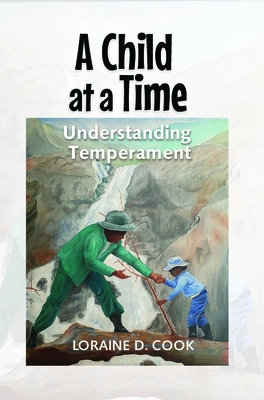
description
waiting adult input; rather, they come into the world with inherent traits
encoded in their DNA. As they develop, these unique characteristics gradually
reveal themselves. In A Child at a Time: Understanding Temperament, Loraine D. Cook explains
the importance of teachers and parents understanding a child's unique
characteristics (their temperament), reflected in their behaviour and reaction
styles. The author questions the conventional one-size-fits-all approach to
education to which many educators and parents adhere. By exploring the concepts
of a poorness-of-fit and a goodness-of-fit environment, Cook illustrates how a
child's surroundings can influence the expression of their temperament. Over several
chapters, the author discusses parents'
and teachers' interactions with their children and how such interactions can
affect the quality of the home and school environments in which children
develop. These interactions are not only impacted by children's temperaments
but also by the characteristics of the adults involved. If adults fail to account for temperament in managing children's
behaviours, then the nurturing environment for children in the home and the
classroom may be inundated with frustrated parents, teachers and children, potentially
compromising children's social, emotional and academic growth. By helping
parents and teachers understand children's behavioural patterns, adults can
develop a more holistic environment conducive to their children's well-being. In the book's concluding chapters,
Cook discusses the INSIGHTS programme, which is rooted in temperament theories,
and its outcomes in Jamaica. This programme offers customized behaviour-management
strategies for parents and teachers based on children's temperaments and
emphasizes early intervention by teaching conflict-management skills to
children as young as five. A Child at a Time is
a call to educators,
parents and policymakers to recognize that children's individual differences are
important, particularly in their formative years. By reading this book, parents
and educators can gain valuable insights into children's behaviours and reactions,
thereby improving their approach to behaviour management.
encoded in their DNA. As they develop, these unique characteristics gradually
reveal themselves. In A Child at a Time: Understanding Temperament, Loraine D. Cook explains
the importance of teachers and parents understanding a child's unique
characteristics (their temperament), reflected in their behaviour and reaction
styles. The author questions the conventional one-size-fits-all approach to
education to which many educators and parents adhere. By exploring the concepts
of a poorness-of-fit and a goodness-of-fit environment, Cook illustrates how a
child's surroundings can influence the expression of their temperament. Over several
chapters, the author discusses parents'
and teachers' interactions with their children and how such interactions can
affect the quality of the home and school environments in which children
develop. These interactions are not only impacted by children's temperaments
but also by the characteristics of the adults involved. If adults fail to account for temperament in managing children's
behaviours, then the nurturing environment for children in the home and the
classroom may be inundated with frustrated parents, teachers and children, potentially
compromising children's social, emotional and academic growth. By helping
parents and teachers understand children's behavioural patterns, adults can
develop a more holistic environment conducive to their children's well-being. In the book's concluding chapters,
Cook discusses the INSIGHTS programme, which is rooted in temperament theories,
and its outcomes in Jamaica. This programme offers customized behaviour-management
strategies for parents and teachers based on children's temperaments and
emphasizes early intervention by teaching conflict-management skills to
children as young as five. A Child at a Time is
a call to educators,
parents and policymakers to recognize that children's individual differences are
important, particularly in their formative years. By reading this book, parents
and educators can gain valuable insights into children's behaviours and reactions,
thereby improving their approach to behaviour management.
member goods
No member items were found under this heading.
listens & views

CELLO CONCERTO / APOCALYPSE / ...
by MENOTTI / WALLFISCH / HICKOX / ORCH SPOLETO FESTIV
COMPACT DISC$20.75
Return Policy
All sales are final
Shipping
No special shipping considerations available.
Shipping fees determined at checkout.





